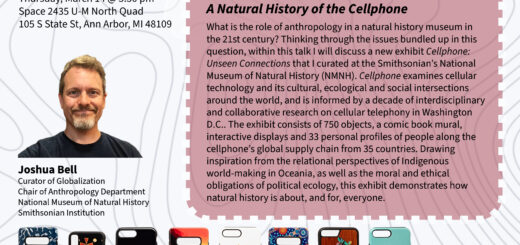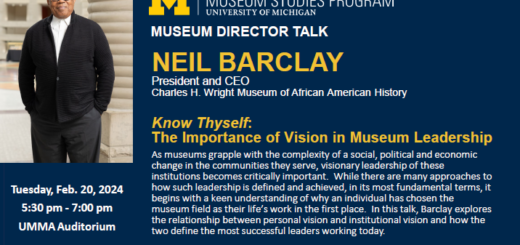Conferences and Symposia
Activating the Past: An International Symposium on Historic Sites of Conscience
Remembering Racism in Urban Communities: The District Six Museum, the “Slave Galleries” of St. Augustine ‘s Church, and the Lower East Side Tenement Museum
Friday, March 19, 2004
Presented by Valmont Layne, Director, District Six Museum, Cape Town, South Africa, The Reverend Deacon Edgar W. Hopper Hopper, On-Site Coordinator, “Slave Galleries,” St. Augustine ‘s Episcopal Church, New York City, and Liz Sevcenko, Director, International Coalition of Historic Site Museums of Conscience.
Sites in urban neighborhoods in Cape Town and New York City present how they bring diverse communities together to remember difficult histories of racial and ethnic conflict ““ and use this memory to foster community action on neighborhood issues today.
National Conversations on Democracy: The Japanese American National Museum’s National Center for the Preservation of Democracy and the Gulag Museum at Perm-36
Friday, March 19, 2004
Presented by Eileen Kurahashi, Vice President, National Center for the Preservation of Democracy, Los Angeles, Juliana Egof, Staff, Gulag Museum at Perm-36, Perm, Russia, and Tatiana Koursina, Executive Director, Gulag Museum at Perm-36, Perm, Russia.
Sites remembering two violent abrogations of democracy ““ the internment of Japanese Americans and the forced labor of the Gulag ““ present how they use these histories to promote cultures of active citizen participation and democratic engagement.
Lectures
Issues in Museum Studies
The Museum as an Open House: The National Museum of the Philippines as Site of American Colonial Legacy and History
Monday, December 8, 2003
Presented by Ana Maria Theresa P. Labrador, Associate Professor, Department of Art Studies and Curator, Jorge B. Vargas Museum
Two years ago, the National Museum of the Philippines (NMP) celebrated its centenary. This celebration was simultaneously held with other institutions built by the American colonial government upon its assumption of control over what was then known as the Philippine Islands. Given the centennial, it was surprising that celebratory events had little impact on the lives of many Filipinos. Perhaps this had to do with confusion over the date of the NMP’s centenary and whether the founding year should have been recognized as 1901, when it was declared to be the Insular Museum of Ethnology, Archaeology and Commerce, or 1928, when the Museum was separated from the Philippine Library and became known as the National Museum.
Like other periods in the history of the Philippines, the uncertainty over dates may stem from Filipinos’ relationship with the U.S. and their own ambiguity between two tendencies””those that distinguish groups of people that have been colonized from those who were not, swaying between resistance and mimicry. The aim of this presentation is to create an understanding of the vague regard of Filipinos to its former colonizer, citing evidence and details from the history and management of the NMP. I would like to show the tension between holding on to colonial legacies and creating new traditions.
For instance, the notion of a museum as an educational institution or as part of it may come from an earlier framework during the Spanish colonial period. But the spirit within which the concept of a modern museum was constructed may have arisen from the U.S. colonizers’ ambiguous agenda, including creating a national museum as a symbol of sovereignty at the same time laying claim to the Philippines. I will pay attention to the idea of national identity that eventually became embedded in the framing of the 1928 museum law — a time when the commonwealth government was being formed and the beginning of the decolonization process.
The present situation within which the NMP finds itself may involve deeper challenges than those lists of shortcomings frequently blamed for the museum’s lack of success, such as the dearth of qualified personnel and shortage of funds. I want to look beyond these and find evidence in the structures that are still entrenched as part of the U.S. colonial legacy. I believe that the NMP is an archetype of Philippine museums and a space for historiography. My presentation will deal with the problem of writing and celebrating colonial history as epitomized by many Filipinos’ regard for NMP, including those who work in it.
About Ana Maria Theresa Labrador
Ana Maria Theresa Labrador is a social anthropologist and lecturer in Anthropology, Non-Western Aesthetics, Museum Studies and Cultural Heritage Management at Ateneo de Manila University in the Philippines. She was previously the head of University of the Philippines’ Vargas Museum and a curator at the Contemporary Art Museum of the Philippines. Since 2003, Labrador has been an Honorary Fellow at the Centre for Cultural Materials Conservation at the University of Melbourne and in 2008 undertook two main research programs in Melbourne examining indigenous conservation practice. Labrador has held multiple editorial positions and lectures widely on museum studies and the aesthetics and theories of non-western art. Recent publications include “Painting Practice in the Philippines: Two Institutionalized Practices and their Materials and Techniques” (co-written with Nicole Tse and Robyn Slogett) in Crossing Cultures: Conflict, Migration, Convergence (2009) and “A Re-Appraisal of the Bulul”, in The Philippines: Early Collections in the Museum fur Volkerkunde (2009).
Building the Ziibiwing Center of Anishinabe Clture & Lifeways
Wednesday, March 10, 2004
Presented by Shannon Martin, Director, Ziibiwing Culture Center
Our Brand of History: Transforming from a Museum to an Attraction
Wednesday, February 18, 2004
Presented by Steven K. Hamp, President, The Henry Ford and Patricia Mooradian, COO, The Henry Ford.
Defining the brand and naming The Henry Ford has been part of a two-year transformation process at the place many called “Henry Ford Museum,” or “Greenfield Village,” or simply, “The Village.” We’ll discuss both the process and outcomes of our branding project “” from the early visitor research, through our collaboration with our consultants, to define our brand, and on to the roll-out with staff, press, and visitors. We’ll also show clear examples of how we’re putting our brand into action as we strive to become America’s Greatest History Attraction.
Nazi-Era Assets and U.S. Museums: Figuring Out the Right Thing To Do
Tuesday, January 27, 2004
Helen Wechsler, Director of International and Ethics Programs, American Association of Museums
Professional Organizations, Michigan Museums, and Money Woes
Friday, March 26, 2004
Presented by Teresa Goforth, Director, Michigan Museum Association
Pudding Pow(d)er and Stasi Vans. Museums and Memory in the former GDR
Friday, April 9, 2004
Presented by Daphne Berdahl, Department of Anthropology, University of Minnesota
Organized by the Department of Germanic Languages and Literature, sponsored by the Museum Studies Program.


